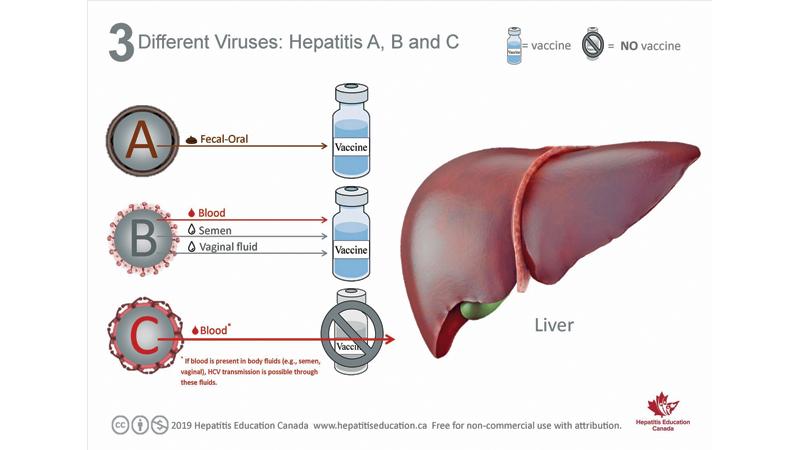
In two days the world spotlight will fall on Hepatitis as experts come together to share their views on this common widespread disease. This year it takes on new significance due to the Covid-19 pandemic. Hence the emphasis on personal hygiene, safe food, healthy lifestyles and adhering to health protocols become important.
Consultant Epidemiologist, Epidemiology Unit, Ministry of Health, Dr. Thilanga Ruwanpathirana spoke to the Sunday Observer on what Hepatitis is, how it is caused, treated and most importantly prevented.
Excerpts…
Q. When World Hepatitis Day takes centre stage on July 28, health officials are concerned that there are many who still do not understand what this widespread disease is even when they have it. So tell us what is Hepatitis? How is it caused?
 Dr. Thilanga Ruwanpathirana |
A. Hepatitis is an inflammation of the liver. This condition can be reverted to normal or can be progressed into scarring of liver tissue, Cirrhosis or liver cancer. There are many causes for hepatitis but it is mainly due to viruses, globally. However, in Sri Lanka, liver diseases are mainly due to alcohol and non-alcoholic fatty liver.
Q. Observing Hepatitis Day amid the Covid-19 virus - what is its impact on patients with hepatitis?
A. Preliminary researches have shown evidence of liver damage in Covid-19 illness, especially in its severe form.
Q.Are there different types of Hepatitis?
A. There are five types. Hepatitis A is mainly a short-term disease with no long-term effects. Hepatitis B and C may be short-term or can progress into a long-term disease. The long-term disease is associated with serious liver damage including cirrhosis, liver failure and liver cancer. Hepatitis D has long-term sequelae. It is relatively a rare condition and the treatment success is generally low. Hepatitis E is a rare condition and long-term cases have been reported in immune-suppressed patients.
Q. Are they linked? Is it true Hepatitis D can’t multiply without the presence of Hepatitis B?
A. Yes, hepatitis D can’t be contracted on its own. It needs the assistance of Hepatitis B virus for its replication. Around 5% of the people with long-term Hepatitis B are reportedly co-infected with Hepatitis D which rapidly progresses into serious liver disease or death.
Q. Who are those most at risk of each type and why?
A. Hepatitis A and E
Those who consume unhygienically prepared food and drink un-boiled or unchlorinated water are at a greater risk. (e.g. Those who eat street junk food)
Hepatitis B, C and D
Those who engage in casual unprotected sexual contacts (both hetero and homosexual), injectable drug addicts, those on long-term haemodialysis, people with HIV and people who need to get blood or blood products frequently (Thalassaemic, Haemophilic, cancer patients) are at greater risk. Practices such as body piercing and tattooing also carry a risk of contracting Hepatitis B and C if they do not adhere to correct hygienic measures.
Q. Which type is most common in Sri Lanka and where?
A. Hepatitis A is the commonest form. It is reported in districts such as, Ratnapura, Moneragala, Badulla, Hambanthota and Trincomalee.
Q. Usual transmission mode for each type?
A. Hepatitis A and E are spread by ingestion of infected food or water (Feco-oral route). In other words, when a healthy person consumes food or water contaminated with stools of an infected person.
Hepatitis B, C and D are spread through body fluids (eg. blood or blood products, sexual secretions, etc.). Though the transmission is similar to HIV/AIDs, Hepatitis B transmission is much easier than HIV. Unprotected sexual contacts, unscreened blood or organ transplant, sharing injection needles, razors and toothbrushes, accidental needle prick injuries could transmit Viral Hepatitis B and C. These two viruses can transmit from mother to child during delivery. However, they are not spread by having a normal day-to-day relationship with an infected person.
Q. Symptoms - How does a person know he/she is having hepatitis? What are the most common symptoms and health impacts on the body?
A. Yellow colour discolouration of the body is one of the main features seen in viral hepatitis, especially in eyes, palms and fingernails. The disease usually starts with symptoms like fever, fatigue, loss of appetite, nausea, vomiting and abdominal pain. With the progression of the disease, dark coloured urine, light coloured stools and yellow colour discolouration may appear.
Q. If a person has these symptoms how soon should he/she see a doctor?
A. The sooner the better. The incubation period of Viral Hepatitis A is between 14 to 28 days, and Hepatitis B 1-6 months averaging around 4 months. However, the incubation period of Hepatitis C is shorter (6-10 weeks). Incubation period refers to the time from the first contact with the virus to the time of the first appearance of the symptoms of the disease.
Q. Could early detection prevent the progress into complications?
A. Yes, certainly
Q. Diagnosis- How does a doctor diagnose Hepatitis and which type? What is the usual procedure?
A. Several blood tests need to be taken after which the doctor can diagnose hepatitis and its type.
Q. Treatment- what are the options? Are they available here?
A. Hepatitis A can be treated in a short period while Hepatitis B and C may need long term treatment. All the latest drugs are available in Sri Lanka and are free at government hospitals. The ultimate treatment for cirrhosis, which is the transplantation of the liver is also available in Sri Lanka.
Q. What are the after-effects? On what type of hepatitis do they have a lasting impact?
 A. Hepatitis A usually does not cause long-term effects. However, Hepatitis B and C have long-term effects in some patients if they get into chronic stages. Liver failure, cirrhosis and liver cancers are some known complications.
A. Hepatitis A usually does not cause long-term effects. However, Hepatitis B and C have long-term effects in some patients if they get into chronic stages. Liver failure, cirrhosis and liver cancers are some known complications.
The chance of getting into the chronic stage in hepatitis B is high if the person is young. It reduces with the advancement of age. (Infants - 90%, 1-5 years of age 25%-50% and in adults 5-10% chance for chronic hepatitis). However, in hepatitis C there is more than a 50% chance of getting into the chronic stage.
Q. Can alcohol and other toxins directly damage the liver?
A. Yes, excess alcohol and toxins are known to cause liver damage and ultimately end up in liver failure and cirrhosis. In Sri Lanka, liver damage and cirrhosis are mainly due to non-alcoholic fatty liver and alcohol-related conditions, while the contribution from Hepatitis B and C are relatively less as the latter two conditions are less prevalent in the country.
Q. Is there a vaccine to prevent Hepatitis virus infection? If so, does it apply to all types or only to one or two types like Hepatitis A?
A. Yes, there are vaccines for Hepatitis A and B. However, there is no vaccine for Hepatitis C in the world.
Q. Who is eligible for this vaccine?
A. Hepatitis B vaccine is given to all Sri Lankan children through the National Immunisation Program free. It is given as a combination vaccine (Triple + Hib + Hep B) named ‘Pentavalent’ at 2, 4 and 6 months from birth. It is an injection and provides lifelong protection for Hepatitis B. Adult Hepatitis B vaccine is also available in the country. It has three doses and comes as injections.
The second dose should be taken one month after the first and the third dose after 6 months from the first. The vaccine given for children cannot be used for adults.
Hepatitis A vaccine is available in Sri Lanka in the private sector and is not included in the National Immunisation Program. It is a two-dose vaccine and the second dose should be taken after six months from the first. More details of the vaccine can be obtained from the nearest government vaccination clinic, from your area midwife or by visiting the Medical Officer of Health office in your area.
Q. Prevention – What are the Dos and Don’ts to follow in each type?
A. Hepatitis A and E
Do
1. Hand washing – before eating, after defecation, before preparation of food.
2. Drink boiled water
3. Eat hygienically prepared food
4. Clean green leafy vegetables well before consuming
Don’t
1. Consume street food
2. Keep cooked food uncovered Hepatitis B, C and D
Do
1. Vaccinate your child with Hepatitis B containing vaccine, all three doses at proper intervals
2. If you are engaging in high-risk activities (eg. health professionals who work with patients, medical students), get Hepatitis B adult vaccination if not vaccinated during childhood
3. Limit sexual activities to a single, faithful partner or use condoms.
Don’t
1. Share needles, razors, toothbrushes, nailcare tools or pierced earrings
2. Reuse needles and make sure that the equipment used in body piercing, tattooing, manicures and pedicures are properly sterilised or disposable type
3. Donate blood if you are found to be positive for Hepatitis B, C or D
4. Go to places with inadequate hygienic practices for tattooing and body piercing
Q. Are certain types of Hepatitis reversible e.g. cirrhosis due to smoking and alcohol hepatitis? How long should one avoid taking these toxins to be free from cirrhosis?
A. Hepatitis A is completely curable and the liver damage is completely reversible.
Hepatitis B, the majority clear the disease by themselves after 6 months from exposure.
However, 5-10% of adults go into the long term or chronic stage associated with liver scarring, cirrhosis, liver failure and liver cancers.
This percentage increases in the young. (If an infant contracts Hepatitis B, there is 90% of chance to end up in long-term disease)
Hepatitis C, the possibility of going into the chronic stage is more than 50%.
In addition, there are many other agents which cause long-term liver damage leading to scarring, cirrhosis, liver failure and liver cancer. (e.g. Alcohol, certain medications, toxic metals, autoimmune liver diseases)
Irrespective of the cause, the damage done by cirrhosis to the liver is rarely reversed. Reversal depends on the timing of the diagnosis; the causative agent is completely removed by proper treatment and habits like alcoholism and smoking which aggravate liver damage is completely ceased.
It is difficult to give the time duration for the reversal (if it is at the reversible stage) of the liver damage after cessation of alcohol and smoking. However, there is a definite benefit in quitting from these habits irrespective of the stage of the liver damage.
